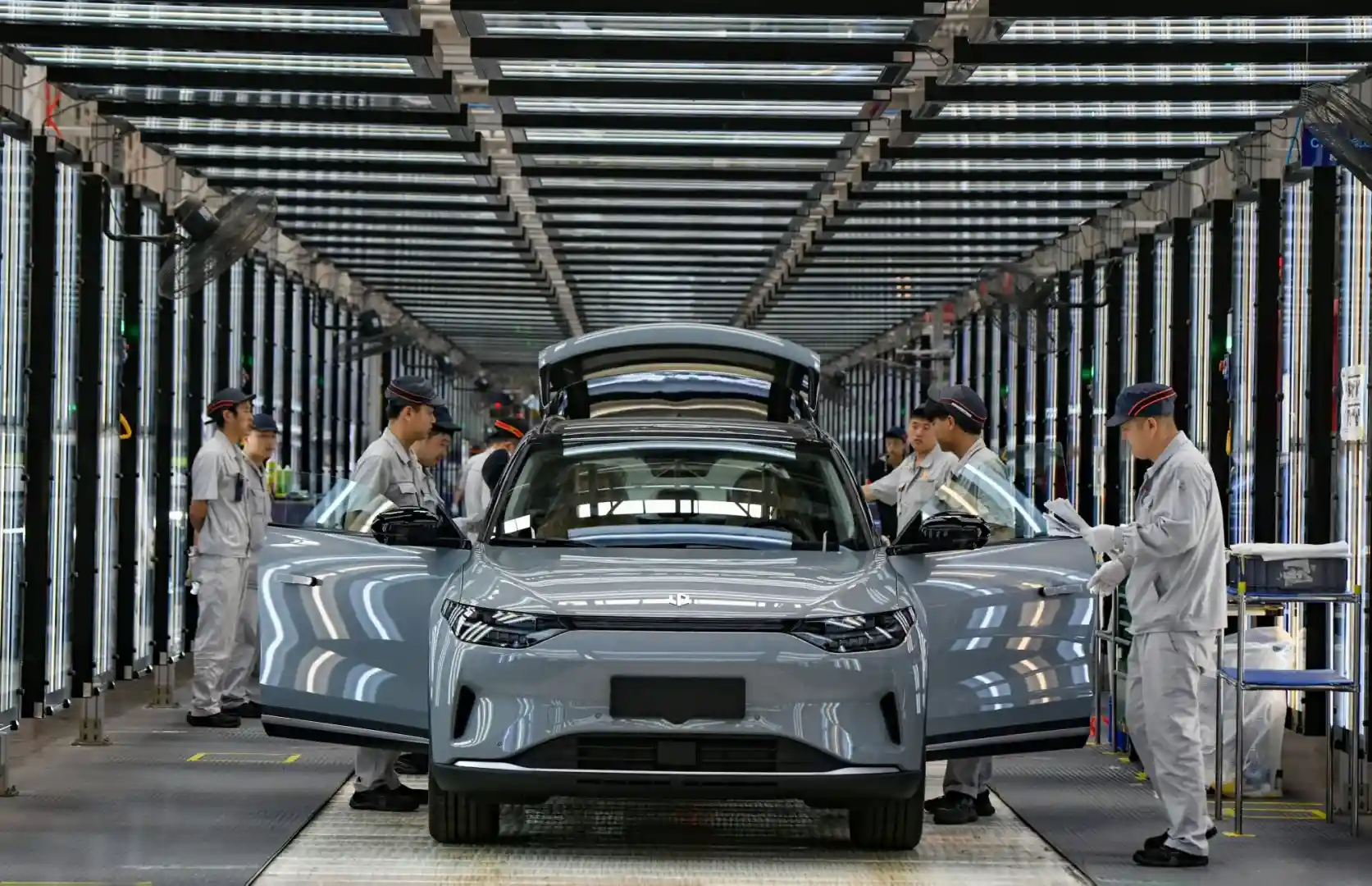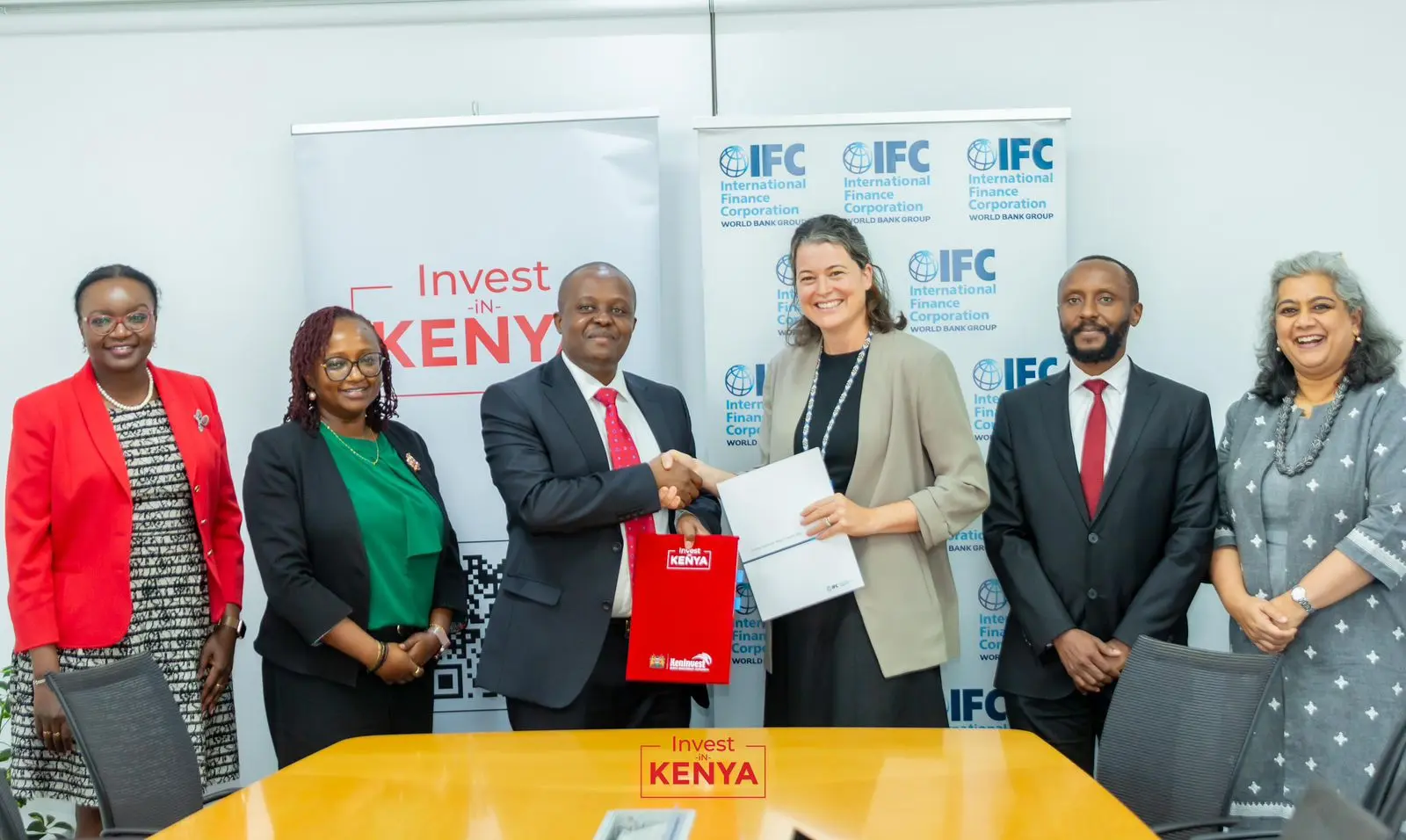Morocco has secured its position as Africa’s clean energy manufacturing pioneer through a groundbreaking $6.5 billion partnership with Chinese battery giant Gotion High-Tech, establishing the continent’s first battery gigafactory in a move that could fundamentally reshape global electric vehicle supply chains and Africa’s role in the energy transition.
The massive industrial project, now under construction in Kenitra, northwest Morocco, represents far more than a manufacturing facility—it embodies a strategic transformation that positions Morocco as a critical bridge between Europe, Africa, and Asia in one of the century’s most vital industries.
One decision can change your entire career. Take that step with our Online courses in ACCA, HESI A2, ATI TEAS 7, HESI EXIT, NCLEX-RN, NCLEX-PN, and Financial Literacy. Join Serrari Ed and start building your brighter future today.
Record-Breaking Investment Sets New Continental Standard
The Kenitra gigafactory represents one of the largest industrial projects ever launched in Africa, with the initial phase alone requiring $1.3 billion in capital expenditure. Production is scheduled to commence in the third quarter of 2026, with the facility initially delivering 20 gigawatt-hours (GWh) annually—sufficient to power hundreds of thousands of electric vehicles.
The project’s scope extends well beyond assembly operations. Unlike many facilities that depend on imported components, the Kenitra complex will manufacture critical electrode materials including cathodes and anodes, creating a vertically integrated supply chain that reduces dependency on foreign imports and enhances cost competitiveness.
Khalid Qalam, Gotion’s Moroccan director, confirmed that earthworks have been completed and construction is accelerating rapidly. “This is not just about production capacity,” he emphasized. “It’s about building an entire value chain in Morocco that serves Europe, Africa, and beyond.”
Morocco’s Automotive Excellence Drives Strategic Selection
The selection of Morocco as the site for Africa’s first gigafactory reflects the kingdom’s remarkable transformation into the continent’s automotive powerhouse. Morocco’s automotive industry has become the country’s leading export sector, with overseas sales rising 6.3% to MAD 157.6 billion ($16.3 billion) in 2024.
The country has achieved extraordinary success in automotive exports to Europe, delivering 536,000 finished vehicles in 2023 and becoming the European Union’s second-largest automotive supplier after China. This achievement has been driven by major manufacturers including Renault Group and Stellantis, who have established significant production facilities in the country.
Morocco’s automotive sector achieved record-breaking performance in 2024, with export revenues reaching MAD 157 billion ($15.7 billion), representing a 6.3% annual surge. The country has strategically positioned itself to capture approximately 80% of vehicle production for export markets, primarily targeting the European Union.
Strategic Geographic Positioning Maximizes Market Access
Morocco’s unique geographic position—just 14 kilometers from Spain across the Strait of Gibraltar—provides unparalleled access to European markets. The Tanger Med port processed almost 601,000 new vehicles in 2024, with nearly 540,000 destined for European markets.
This strategic location enables Morocco to serve as a natural gateway between Africa and Europe, leveraging established logistics networks and trade relationships. The country benefits from multiple free trade agreements with both the European Union and the United States, facilitating seamless market access for manufactured goods.
The proximity to European automotive hubs, combined with lower operational costs compared to European production facilities, creates significant competitive advantages for manufacturers seeking to optimize their supply chains while maintaining quality standards.
Comprehensive Economic Impact and Job Creation
The economic implications of the gigafactory project extend far beyond manufacturing capabilities. The initial phase alone is projected to create 17,000 direct and indirect jobs, including 2,300 highly skilled positions, marking a transformative moment for Morocco’s technical workforce.
The project represents a decisive shift from traditional industries such as agriculture and textiles toward high-tech manufacturing, aligning with Morocco’s broader economic diversification strategy. The country’s investment fund CDG has taken an equity stake in Gotion Power Morocco through its NAMA fund, demonstrating governmental commitment to the initiative.
Beyond direct employment, the project is expected to catalyze development of supporting industries and services, creating a multiplier effect throughout the regional economy. The government has emphasized creating “real opportunities for working people,” including technical training programs and career development in emerging technologies.
China’s Belt and Road Initiative Drives Global Strategy
The Morocco gigafactory represents a cornerstone of China’s expanding Belt and Road Initiative engagement in Africa. Chinese BRI investment in Africa reached $30.5 billion in the first half of 2025, nearly five times more than the same period in 2024.
China’s strategy focuses on what it terms the “New Three” industries—electric vehicles, batteries, and renewable energy—as key pillars of its global economic expansion. The technology and manufacturing sector has reached record investments of $48.1 billion in BRI countries during the first half of 2025.
This approach aligns with China’s broader objective of securing supply chain resilience while developing new export markets for Chinese companies. The Morocco project demonstrates how private Chinese companies are increasingly leading overseas investments, moving beyond the traditional state-owned enterprise model.
Multiple Chinese Companies Reinforce Morocco’s Battery Hub Status
The Gotion investment forms part of a broader ecosystem of Chinese companies establishing operations in Morocco’s emerging battery sector. Other significant Chinese firms including BTR, CNGR, Hailiang, and Shinzoom are investing heavily in the country’s battery and materials sector, creating a comprehensive supply chain network.
This coordinated approach transforms Morocco into a strategic hub for green technology manufacturing in North Africa, with implications extending far beyond national borders. The concentration of expertise and infrastructure creates synergies that enhance competitiveness and accelerate technological development.
The multi-company approach also provides supply chain redundancy and reduces dependency on single suppliers, creating a more resilient manufacturing ecosystem that can adapt to changing market conditions and demand patterns.
Targeting European Electric Vehicle Transformation
The timing of Morocco’s gigafactory aligns precisely with Europe’s ambitious electric vehicle transition goals. The European Union has mandated that all new cars must achieve zero emissions by 2035, creating enormous demand for battery manufacturing capacity closer to European markets.
Approximately 85% of batteries produced in the Morocco facility will be exported to European Union markets, leveraging established automotive supply chains and relationships with major European manufacturers.
This export strategy takes advantage of Morocco’s existing automotive relationships with European companies. Renault Group and Stellantis already operate significant manufacturing facilities in Morocco, creating established logistics networks and quality standards that can support battery integration into vehicle production processes.
Build the future you deserve. Get started with our top-tier Online courses: ACCA, HESI A2, ATI TEAS 7, HESI EXIT, NCLEX-RN, NCLEX-PN, and Financial Literacy. Let Serrari Ed guide your path to success. Enroll today.
Renewable Energy Storage Market Opportunities
Beyond automotive applications, the gigafactory will target the rapidly growing renewable energy storage market across Africa and the Middle East. These regions benefit from approximately 300 annual sunshine days, creating exceptional potential for solar energy generation that requires large-scale storage solutions.
Morocco itself has made substantial investments in renewable energy infrastructure, including some of the world’s largest solar installations. The domestic market for energy storage systems is expected to grow significantly as the country continues expanding its renewable energy capacity.
The regional focus on renewable energy storage represents a strategic diversification beyond automotive applications, providing additional revenue streams and reducing dependency on cyclical automotive market conditions.
Continental Significance and Development Model
The Morocco project carries profound implications for Africa’s industrial development trajectory. By hosting the continent’s first battery gigafactory, Morocco demonstrates how African nations can move beyond being exporters of raw materials to become manufacturers of advanced technologies.
This transformation is particularly significant given Africa’s abundant mineral resources essential for battery production. Countries such as the Democratic Republic of Congo (cobalt), Zambia (copper), and Zimbabwe (lithium) possess substantial reserves of critical battery materials, yet have historically exported these resources in raw form.
The Morocco model suggests pathways for resource-rich African nations to capture greater value from their natural wealth through manufacturing and processing operations. If successfully replicated, this approach could fundamentally alter Africa’s position in global value chains.
Government and Institutional Support Framework
The project has received comprehensive support from Moroccan government institutions and leadership. Prime Minister Aziz Akhannouch has personally engaged with the project, including visiting Gotion facilities in China to assess technological capabilities and project progress.
The signing ceremony in Rabat was attended by senior government officials including the Minister of the Interior, Minister of Economy and Finance, and Minister of Industry and Commerce, demonstrating the project’s strategic importance to national economic development objectives.
Government support extends beyond ceremonial endorsement to practical facilitation including regulatory streamlining, infrastructure development, and workforce development programs designed to support the project’s technical requirements.
Technology Transfer and Industrial Development
The gigafactory represents significant technology transfer opportunities for Morocco’s industrial sector. Unlike simple assembly operations, the integrated manufacturing approach includes sophisticated electrode material production, requiring advanced technical expertise and training programs.
Gotion High-Tech brings extensive experience from operations across Europe, the United States, and Asia, with nearly 12 gigafactories commissioned globally in recent years. This expertise provides Morocco with access to cutting-edge battery technologies and manufacturing processes.
The technology transfer aspects extend beyond immediate production to include research and development capabilities, quality management systems, and advanced manufacturing techniques that can benefit Morocco’s broader industrial sector.
Five-Phase Development Strategy
The gigafactory project follows an ambitious five-phase development strategy designed to scale production capacity systematically over the coming decade. The initial 20 GWh capacity represents only the beginning of a comprehensive expansion plan targeting ultimate capacity of 100 GWh.
Phase two aims to double output to 40 GWh, though specific timelines await finalization based on market conditions and demand patterns. The systematic scaling approach allows for continuous optimization and adaptation to evolving technological requirements.
At full capacity, the facility would position Morocco among the world’s largest battery producers, competing directly with major global manufacturing centers while serving strategic geographic markets more efficiently than distant competitors.
Regional Integration and Infrastructure Development
The project’s success depends significantly on supporting infrastructure development, including transportation networks, energy supply systems, and logistics capabilities. Morocco has invested substantially in these foundational requirements, including expansion of port facilities and transportation corridors.
The Tanger Med port complex provides world-class logistics capabilities with direct rail connections to manufacturing facilities, enabling efficient distribution of finished products to global markets.
Energy infrastructure development includes renewable energy installations designed to power manufacturing operations sustainably, aligning with global environmental standards and customer requirements for clean production processes.
Global Supply Chain Implications
The Morocco gigafactory emergence creates new dynamics in global battery supply chains, potentially reducing European dependence on Asian manufacturing while maintaining cost competitiveness. This geographic diversification addresses European policy objectives around supply chain security and industrial sovereignty.
For automotive manufacturers, the Morocco facility offers proximity advantages that reduce transportation costs and delivery times while providing supply chain flexibility through geographic diversification. These benefits become increasingly valuable as electric vehicle production volumes scale rapidly.
The project also demonstrates how middle-income countries can successfully attract high-technology manufacturing through strategic positioning, policy support, and infrastructure investment rather than solely competing on labor costs.
Future Implications and Continental Model
Looking ahead, the Morocco battery gigafactory success could catalyze similar investments across Africa, particularly in countries with relevant mineral resources or strategic geographic positions. The project demonstrates the viability of advanced manufacturing in African contexts when supported by appropriate infrastructure and policy frameworks.
The partnership between Morocco and China illustrates evolving patterns of international economic cooperation, where developing countries increasingly serve as manufacturing partners rather than simply resource suppliers or finished goods markets.
As global demand for electric vehicles and renewable energy storage continues expanding, the Morocco model provides a framework for African participation in these transformative industries, potentially reshaping the continent’s economic trajectory and global integration patterns.
The success of this groundbreaking initiative will likely influence investment decisions, policy frameworks, and development strategies across Africa, making Morocco’s battery gigafactory a project with implications extending far beyond national boundaries toward continental industrial transformation.
Ready to take your career to the next level? Join our Online courses: ACCA, HESI A2, ATI TEAS 7 , HESI EXIT , NCLEX – RN and NCLEX – PN, Financial Literacy!🌟 Dive into a world of opportunities and empower yourself for success. Explore more at Serrari Ed and start your exciting journey today! ✨
Track GDP, Inflation and Central Bank rates for top African markets with Serrari’s comparator tool.
See today’s Treasury bonds and Money market funds movement across financial service providers in Kenya, using Serrari’s comparator tools.
Photo source: Google
By: Montel Kamau
Serrari Financial Analyst
18th September, 2025
Article, Financial and News Disclaimer
The Value of a Financial Advisor
While this article offers valuable insights, it is essential to recognize that personal finance can be highly complex and unique to each individual. A financial advisor provides professional expertise and personalized guidance to help you make well-informed decisions tailored to your specific circumstances and goals.
Beyond offering knowledge, a financial advisor serves as a trusted partner to help you stay disciplined, avoid common pitfalls, and remain focused on your long-term objectives. Their perspective and experience can complement your own efforts, enhancing your financial well-being and ensuring a more confident approach to managing your finances.
Disclaimer: This article is for informational purposes only and does not constitute financial advice. Readers are encouraged to consult a licensed financial advisor to obtain guidance specific to their financial situation.
Article and News Disclaimer
The information provided on www.serrarigroup.com is for general informational purposes only. While we strive to keep the information up to date and accurate, we make no representations or warranties of any kind, express or implied, about the completeness, accuracy, reliability, suitability, or availability with respect to the website or the information, products, services, or related graphics contained on the website for any purpose. Any reliance you place on such information is therefore strictly at your own risk.
www.serrarigroup.com is not responsible for any errors or omissions, or for the results obtained from the use of this information. All information on the website is provided on an as-is basis, with no guarantee of completeness, accuracy, timeliness, or of the results obtained from the use of this information, and without warranty of any kind, express or implied, including but not limited to warranties of performance, merchantability, and fitness for a particular purpose.
In no event will www.serrarigroup.com be liable to you or anyone else for any decision made or action taken in reliance on the information provided on the website or for any consequential, special, or similar damages, even if advised of the possibility of such damages.
The articles, news, and information presented on www.serrarigroup.com reflect the opinions of the respective authors and contributors and do not necessarily represent the views of the website or its management. Any views or opinions expressed are solely those of the individual authors and do not represent the website's views or opinions as a whole.
The content on www.serrarigroup.com may include links to external websites, which are provided for convenience and informational purposes only. We have no control over the nature, content, and availability of those sites. The inclusion of any links does not necessarily imply a recommendation or endorsement of the views expressed within them.
Every effort is made to keep the website up and running smoothly. However, www.serrarigroup.com takes no responsibility for, and will not be liable for, the website being temporarily unavailable due to technical issues beyond our control.
Please note that laws, regulations, and information can change rapidly, and we advise you to conduct further research and seek professional advice when necessary.
By using www.serrarigroup.com, you agree to this disclaimer and its terms. If you do not agree with this disclaimer, please do not use the website.
www.serrarigroup.com, reserves the right to update, modify, or remove any part of this disclaimer without prior notice. It is your responsibility to review this disclaimer periodically for changes.
Serrari Group 2025












